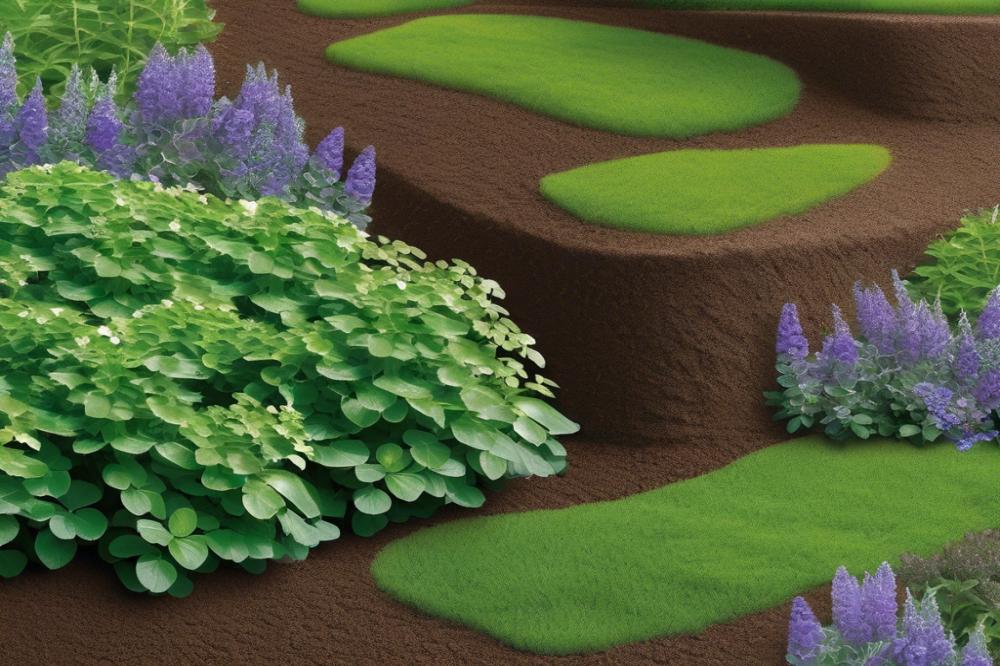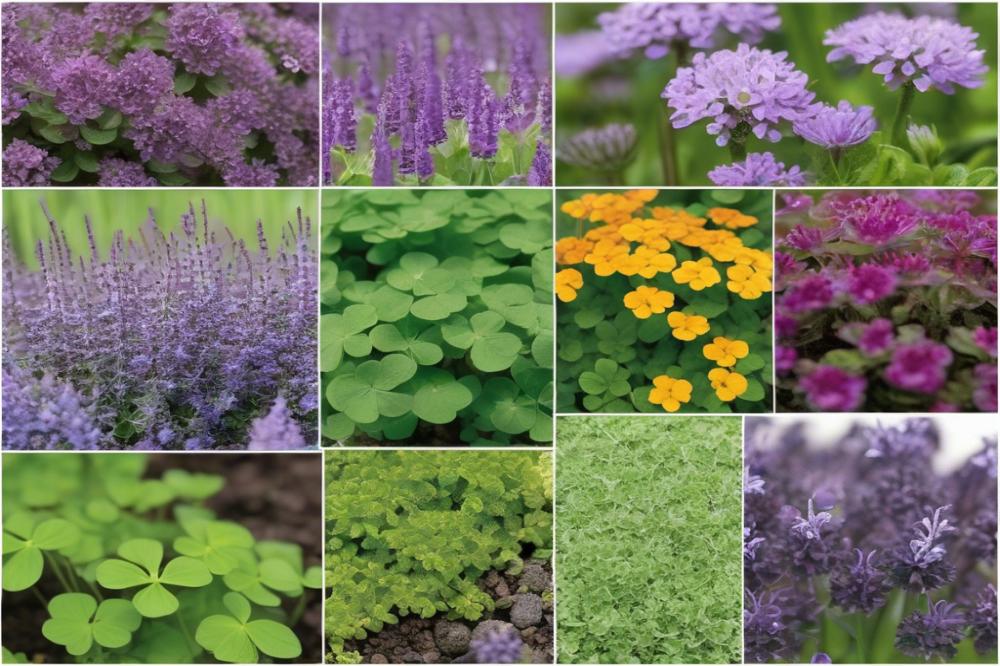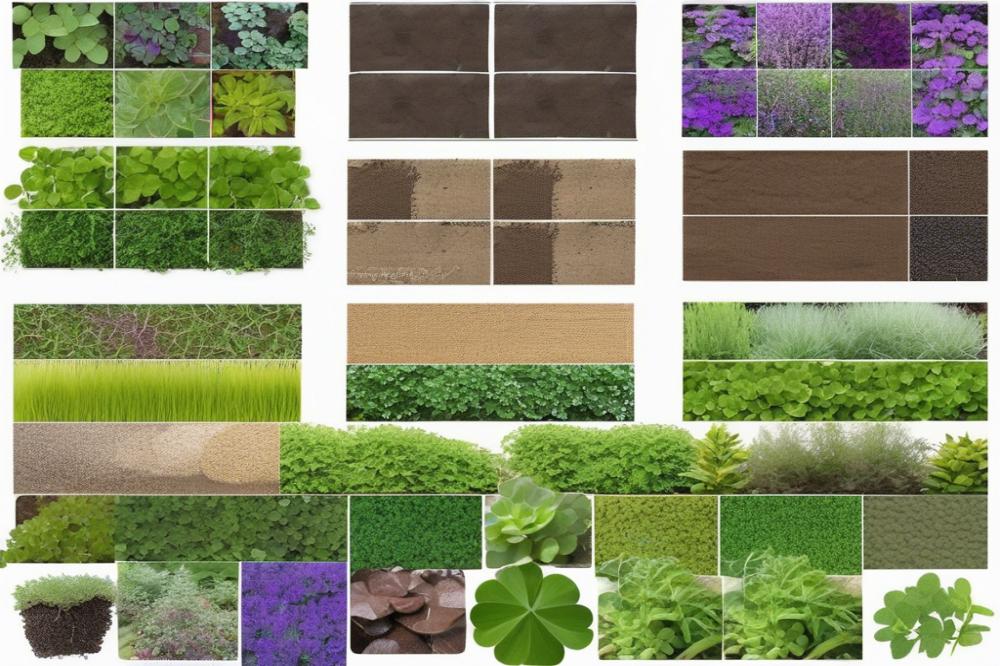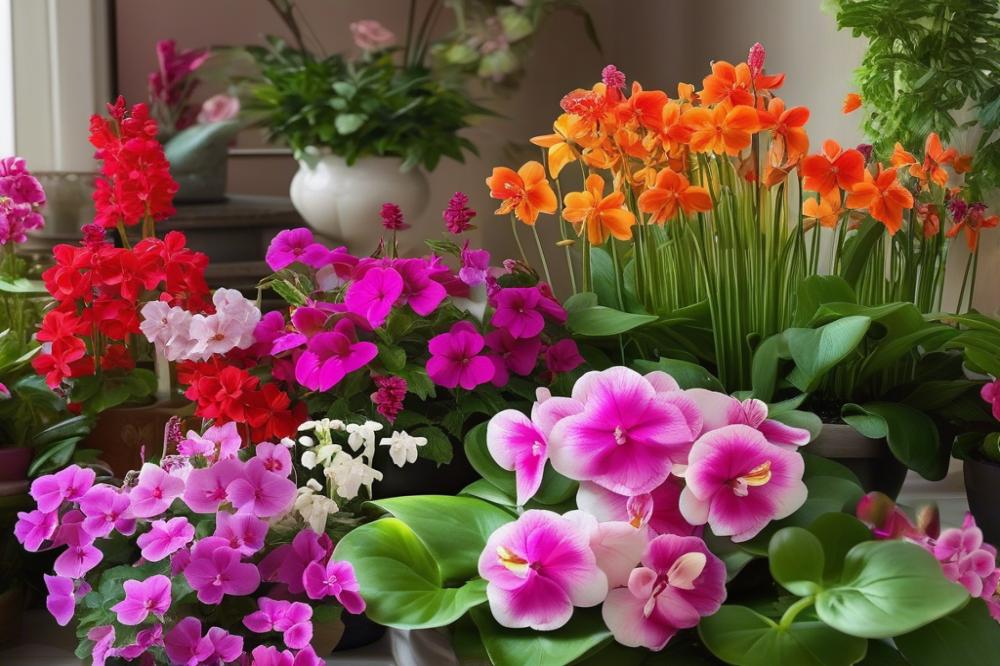The Role of ground covers in Supporting soil health
ground covers play a vital part in promoting a healthy garden environment. These plants create a green carpet that spreads across the earth. They not only add beauty but also contribute significantly to soil stability. Protecting the ground from direct impact helps prevent soil erosion, which is a major concern in many landscapes.
These plants enhance soil health in various ways. They are excellent for increasing organic matter as they grow and decay. With their roots weaving through the earth, they improve soil structure. This structural improvement allows water to infiltrate better, leading to increased moisture retention. Healthier soil can support a wide range of plants, boosting overall biodiversity in the area.
Choosing the right plants matters greatly when considering ground covers. Not all types offer the same benefits. Some may thrive under certain conditions, while others might not adapt well. Selecting species that suit the local environment can support nutrient cycling and promote sustainable gardening practices. Incorporating plant diversity is key to creating a balanced ecosystem, especially in permaculture designs.
Consider how these elements work together in your own garden. Ground covers serve as a foundation for healthier soil, ultimately leading to a more vibrant landscape. Prioritizing these aspects can lead to lasting benefits for both gardens and the animals that inhabit them.
The Importance of Ground Covers in Preventing soil erosion


Soil erosion is a serious problem for gardeners. When the soil washes away, it can ruin the health of the garden. Plants, organic matter, and nutrients are lost in the process. This can make it difficult for any garden to thrive. Without strong soil, sustaining plant life becomes a challenging task.
A protective layer on the ground is essential for maintaining soil stability. A dense cover helps shield the soil from heavy rainfall and strong winds. These natural barriers reduce the impact of raindrops on bare soil. They slow down water flow, allowing it to soak into the earth. This moisture retention is vital for plant growth. Retaining moisture helps support not just existing plants but also the biodiversity of an ecosystem.
Root systems play a crucial role in stabilizing the soil. When plants grow, their roots dig deep into the ground. These roots create a natural network that holds soil particles together. Secure soil structure is key to preventing erosion. Strong roots help keep soil in place, especially on sloped or uneven ground. In sustainable gardening practices, having diverse plant life can enhance this effect even further.
Erosion also affects nutrient cycling. When soil washes away, essential nutrients go with it. A weakened nutrient cycle can limit what plants can take up. Ground covers can support nutrient cycling by adding organic matter to the topsoil. As they grow, these plants break down and enrich the earth. This benefits both gardens and landscaping efforts.
In permaculture, ground cover plants are often chosen for their unique benefits. These plants can enhance biodiversity, which brings resilience to a garden. A mix of species can establish a richer environment for various organisms. Different roots and foliage also attract beneficial insects. This, in turn, helps keep harmful pests at bay.
By understanding the role of ground covers, gardeners can better protect their soil. Maintaining healthy soil is no accident; it requires intentional efforts. Simple choices can result in lasting benefits for the entire ecosystem. Working with nature helps build a garden that can withstand the test of time.
Enhancing Soil Biodiversity Through Ground Covers


In any garden ecosystem, biodiversity plays a crucial role. It helps create a balanced environment where plants and animals can thrive. Various life forms work together beneath the soil, forming a rich tapestry of interactions. The presence of different organisms keeps the ecosystem resilient and healthy.
Beneficial organisms, such as earthworms and microbes, benefit from ground covers. These plants cover the soil and provide habitats for many creatures. As ground covers grow, they help build organic matter, enriching the soil. This rich layer feeds the soil food web, supporting bigger plants and creating a robust ecosystem.
Another essential aspect of these plants is their ability to improve moisture retention. Soil that holds more water is more resilient against erosion. Ground covers, by their nature, protect the soil from harsh weather. This shield allows moisture to penetrate deep into the earth, allowing roots to access it better.
Soil structure is also a critical factor in health. Different plants contribute in unique ways to this structure. The roots of various species create voids that leave space for air and water movement. Healthy soil is alive with microbes that help decompose organic matter, leading to better nutrient cycling. This process ultimately provides essential nutrients to the plants that grow above ground.
Diversity in landscaping is central to sustainable gardening practices. By incorporating diverse plant life into your garden, you support a wider array of insects and wildlife. Pollinator species, for instance, rely heavily on varied plant options. Each plant type attracts different beneficial insects, which assist in controlling pests naturally.
Permaculture principles encourage the use of plant diversity as a major strategy. Adopting these methods can drastically improve the overall health of the soil. A lush ground cover fosters the growth of other plants while aiding in nutrient retention and protecting against erosion. This balance is especially important in urban gardens where soil degradation is often a challenge.
Growing different types of plants not only improves biodiversity but also ensures a healthier soil environment. Therefore, selecting appropriate ground covers can give a significant boost to everyday landscaping efforts. When plants work together, they create an environment that is not just sustainable but also beautiful.
Building Organic Matter and Improving Soil Structure


Organic matter accumulation through various plants plays a vital role in promoting soil health. Ground covers improve soil structure significantly. As they grow, these plants drop leaves and stems, creating a rich layer of organic material. This layer fosters nutrient cycling, which is essential for healthy soil. Microorganisms thrive in this environment, breaking down organic material and enriching the soil with nutrients. Enhanced nutrient availability leads to healthier plants, which in turn support local biodiversity.
Improving soil structure helps with moisture retention and reduces soil erosion. When soil has good structure, it can hold water better, which is critical during dry spells. Rain water infiltrates the ground more easily, making it available for plant roots. This promotes deeper rooting, allowing plants to access more nutrients and moisture. As roots grow, they create channels in the soil, further enhancing its structure. Over time, these actions create a more resilient landscape.
Permaculture practices often utilize plant diversity to boost soil health. A variety of plants can complement each other, enhancing the overall ecosystem. Different root systems work together to break up hard soil, improving aeration. This interconnectedness is vital for sustainable gardening efforts. When hobbyists or professional landscapers choose a diverse array of plants, they are investing in the long-term health of their soil.
Additionally, soil structure impacts the ability of plants to thrive. Well-structured soil creates a habitat for beneficial organisms. Earthworms and other soil life flourish, contributing to a dynamic system. Their activity helps maintain soil aeration and assists in decomposing organic matter. With time, this process leads to a unique soil environment that nurtures plant growth and increases resilience against pests and diseases.
Moisture Retention and Climate Adaptation
Ground covers play a significant role in retaining moisture within the soil. By shielding the ground, they decrease the impact of harsh sun rays. When the ground is covered, evaporation rates drop, keeping vital water from disappearing too quickly. In dry climates, this is particularly important for maintaining healthy plant life.
These plants create a natural blanket on the soil, which helps to insulate it. This insulation leads to a more stable soil temperature and reduces heat stress. Soil structure benefits from this shield, as it helps prevent compaction and keeps spaces for air and water. Over time, the presence of ground covers can boost organic matter in the soil, further enhancing its ability to retain moisture.
Moreover, this practice supports biodiversity. A variety of plant species flourish in an environment where ground covers are utilized, leading to stronger ecosystems. Improved nutrient cycling occurs as decaying plant matter enriches the soil. Plant diversity also attracts beneficial insects, ensuring a healthier garden ecosystem.
Sustainable gardening practices often incorporate ground covers. Gardeners focused on drought resilience rely on these plants to provide protection against soil erosion. This is particularly true in areas prone to heavy rains, where runoff can wash away essential nutrients. By using the right ground covers, gardeners can rebuild soil health and retain water more effectively.
Landscaping with ground covers offers beauty and function. Not only do these plants create eye-catching designs, but they also contribute to environmental health. In permaculture practices, combining them with other native plants forms a robust system that thrives in its natural setting.
The results speak for themselves. Gardens that utilize moisture-retaining covers often experience less need for supplemental watering. With climate change leading to more extreme weather patterns, these clever strategies can assist in adapting gardens to new challenges. Embracing ground covers is not just about enhancing aesthetics; it is an essential strategy for a flourishing garden in a changing world.
Nutrient Cycling with Ground Covers
Nutrient cycling plays a vital role in maintaining soil health. This process involves the movement and transformation of nutrients within ecosystems. It reflects how nutrients are used by plants, returned to the soil, and made available again. Important for crop production and natural landscapes, nutrient cycling impacts overall biodiversity. When soil nutrients are replenished, healthy ecosystems can thrive.
A significant pathway for nutrient cycling is through decomposition. As plants grow, they produce organic matter. When these plants die or shed leaves, they break down, enriching the soil. This decomposition process creates essential nutrients that benefit other plants. With ground covers, the organic matter returned to the soil enhances moisture retention. This quality helps maintain soil structure, making it more resistant to erosion.
The relationship between different plants is also noteworthy. When various species grow together, they create a dynamic system where nutrients are shared. For instance, ground covers often grow alongside taller plants. The shallow roots of ground covers can access different nutrients than the deeper roots of trees and shrubs. This complementarity supports a balanced nutrient profile in the soil.
Landscaping with diversity encourages beneficial interactions among plants. Different species can attract various soil organisms, which aid in breaking down organic material further. This biodiversity not only boosts nutrient availability but also enhances overall ecosystem resilience. Practices like permaculture focus on integrating multiple plant types to maximize nutrient cycling.
In sustainable gardening, careful planning can create a system where plants work together. The right mix of plant diversity can enhance nutrient cycling and improve soil health. For example, legumes fix nitrogen in the soil, which can benefit nearby crops. The interconnectedness of flora plays a crucial role in maintaining a healthy, balanced environment.
Ground Covers in Landscaping and Sustainable Gardening
Ground covers can transform a garden into a vibrant landscape. They add visual appeal by creating lush, green carpets beneath taller plants. Colorful flowers or interesting leaves enhance the scenery. Using these plants creatively can lead to a unique outdoor space that people love.
In sustainable gardening, ground covers play a crucial role. They help prevent soil erosion by holding the soil together. Roots go deep and create a stronger soil structure. This not only keeps dirt from washing away but also promotes moisture retention.
Many varieties of plants contribute to biodiversity. Different species provide food and shelter for various insects, birds, and other wildlife. Enhanced biodiversity creates a balanced ecosystem that benefits everyone. Additionally, a healthy mix of plants can encourage nutrient cycling, which enriches the soil over time.
Organic matter is essential for improving soil quality. Certain ground covers add nutrients back into the earth when they die and decompose. This natural process fosters a rich environment, making it easier for all plants to thrive.
When it comes to landscaping, choices are abundant. Creeping thyme, for example, is an excellent ground cover that offers beautiful blooms and a pleasant fragrance. It can withstand foot traffic while enhancing the garden’s appearance.
Another popular option is clover. This plant is native and requires less water, making it perfect for eco-friendly gardens. Its ability to fix nitrogen in the soil promotes growth for surrounding plants. In permaculture designs, clover serves multiple functions as a ground cover and a natural fertilizer.
For shaded areas, consider using vinca minor. This hardy plant produces lovely purple flowers and thrives with minimal sunlight. It not only combats weed growth but also provides a lush base for larger plants.
Overall, these plants are vital in both aesthetic and ecological aspects of gardening. They bring life to landscapes and cultivate a healthier environment. Using ground covers promotes sustainability while elevating the beauty of any garden space.
Ground Covers in Permaculture Practices
Permaculture emphasizes the harmonious use of plants to create a sustainable ecosystem. Integrating low-growing plants can significantly enhance this approach. Ground covers play a crucial role in maintaining soil health. They prevent soil erosion through their sprawling root systems. With these plants anchoring the soil, valuable topsoil is less likely to wash away during rains.
Where biodiversity flourishes, ecosystems are stronger. Using diverse ground cover species can promote this essential characteristic. Various types of plants work together to create a balance, attracting beneficial insects and wildlife. This diversity also aids in organic matter production. As plants die and decompose, they enrich the soil. Nutrient cycling becomes more efficient, feeding the surrounding flora.
Adequate moisture retention is another remarkable benefit of these plants. Keeping the soil covered helps reduce evaporation. This is especially important in times of drought. By retaining moisture, plants become better equipped to survive. Proper soil structure leads to healthier growth overall. Ground covers can also create a more stable and resilient garden.
Many permaculture practitioners have demonstrated the effectiveness of these strategies. One case study features a garden in California, where clover was used as a ground cover. This not only attracted pollinators but also fixed nitrogen in the soil, enhancing nutrient availability. The garden thrived, showcasing the advantages of thoughtful landscaping.
Another example comes from a permaculture farm in Australia. There, sweet potatoes were utilized as ground cover. This choice helped control weeds while also providing food. Over time, this approach improved the soil quality, allowing other plants to flourish. Utilizing plant diversity helped mitigate issues related to pests and diseases.
As more gardeners turn to sustainable practices, the role of these plants becomes clearer. They are essential for creating vibrant, healthy ecosystems. Integrating them into permaculture designs can yield significant benefits for soil and the overall environment. Observing successful examples inspires others to follow suit. The future of gardening depends heavily on understanding and utilizing these natural allies effectively.
Wrapping Up: The Importance of Ground Covers for Soil Health
Ground covers play a vital role in supporting soil health by protecting the surface and enhancing the ecosystem. These plants are not just decorative; they are hardworking allies in the garden. Their dense growth helps prevent soil erosion, protecting valuable topsoil from being washed away. A layer of vegetation can also retain moisture and provide a habitat for beneficial organisms.
By planting ground covers, gardeners encourage biodiversity. This rich variety of life is essential for a thriving ecosystem. Healthy soil teems with microorganisms, insects, and worms that break down organic matter, contributing to nutrient cycling. When different types of plants are used, they support a broader range of wildlife, including pollinators, which are crucial for many crops.
Utilizing these plants in gardens leads to multiple benefits. Reduced weed growth, improved soil health, and vibrant, thriving ecosystems are just a few rewards. Many gardeners appreciate the aesthetic appeal, but they should recognize the functional advantages at play.
Thinking about long-term soil vitality is important for anyone who gardens. Sustainable practices, such as incorporating low-maintenance plants, contribute to the health of the earth. Gardens that prioritize soil health thrive in the face of challenges like climate change and resource scarcity. Investing time in creating robust, healthy soil will pay off in greater harvests and ecological resilience. Choosing ground covers is not just a simple gardening choice; it is a commitment to nurturing the earth for future generations.



